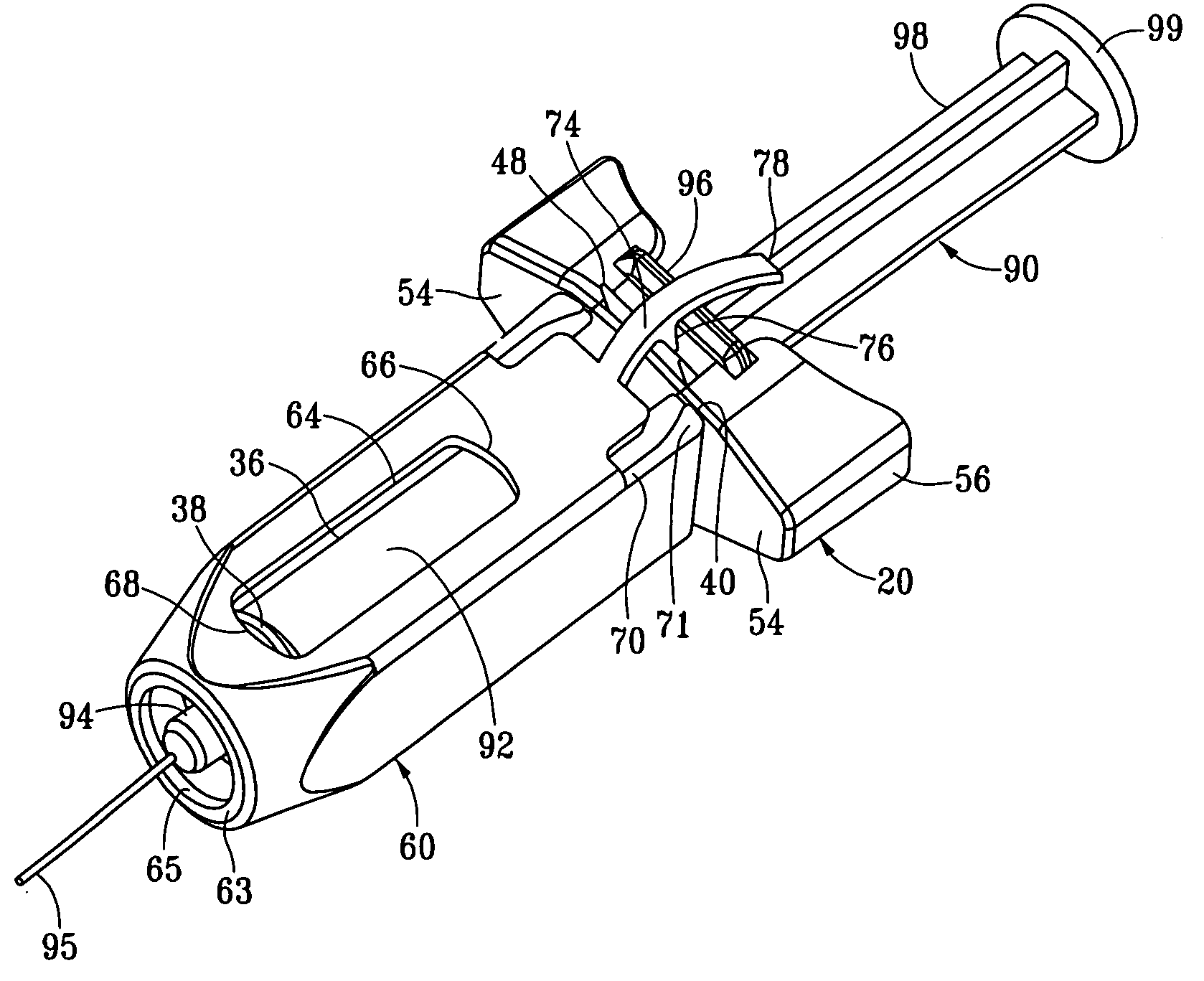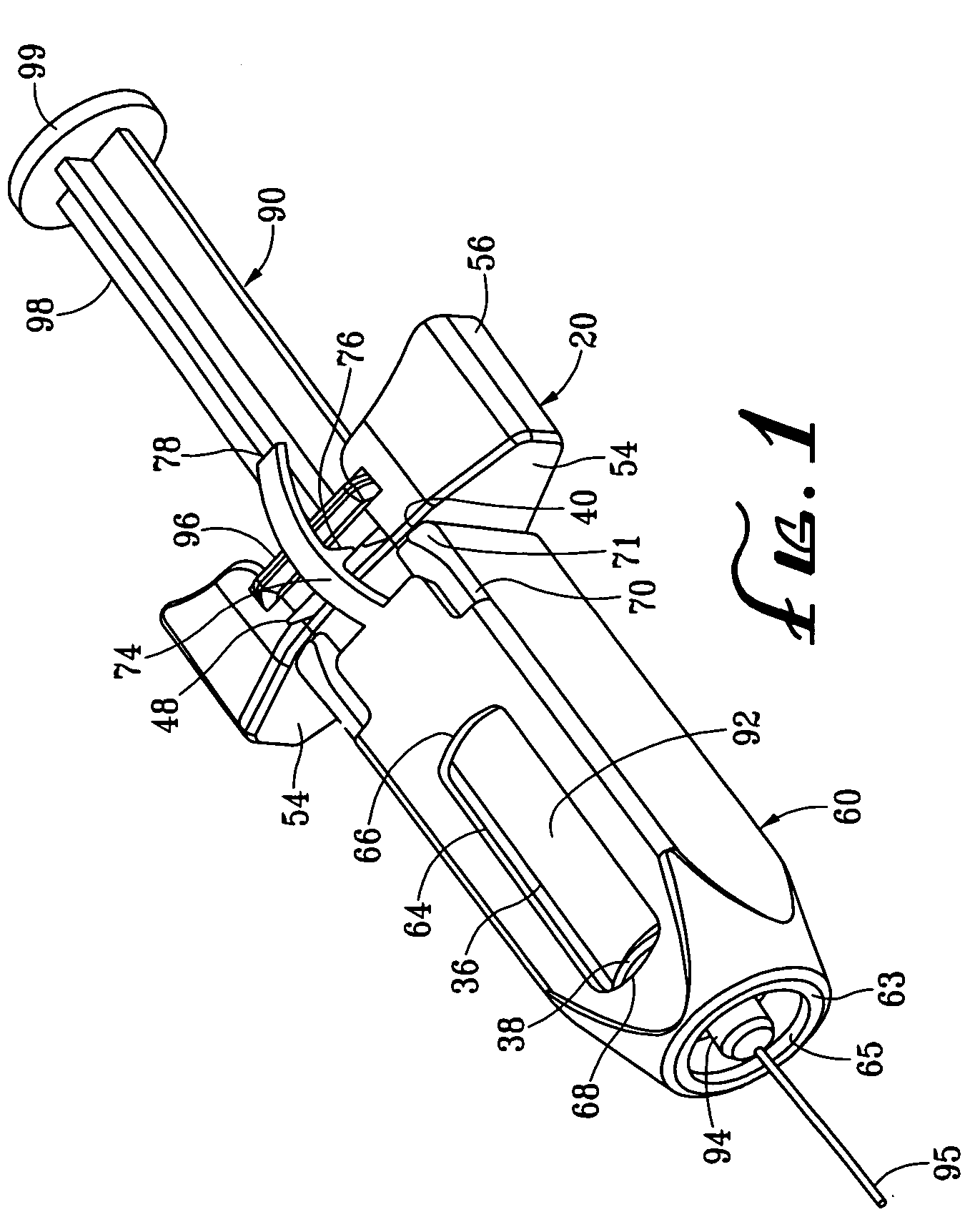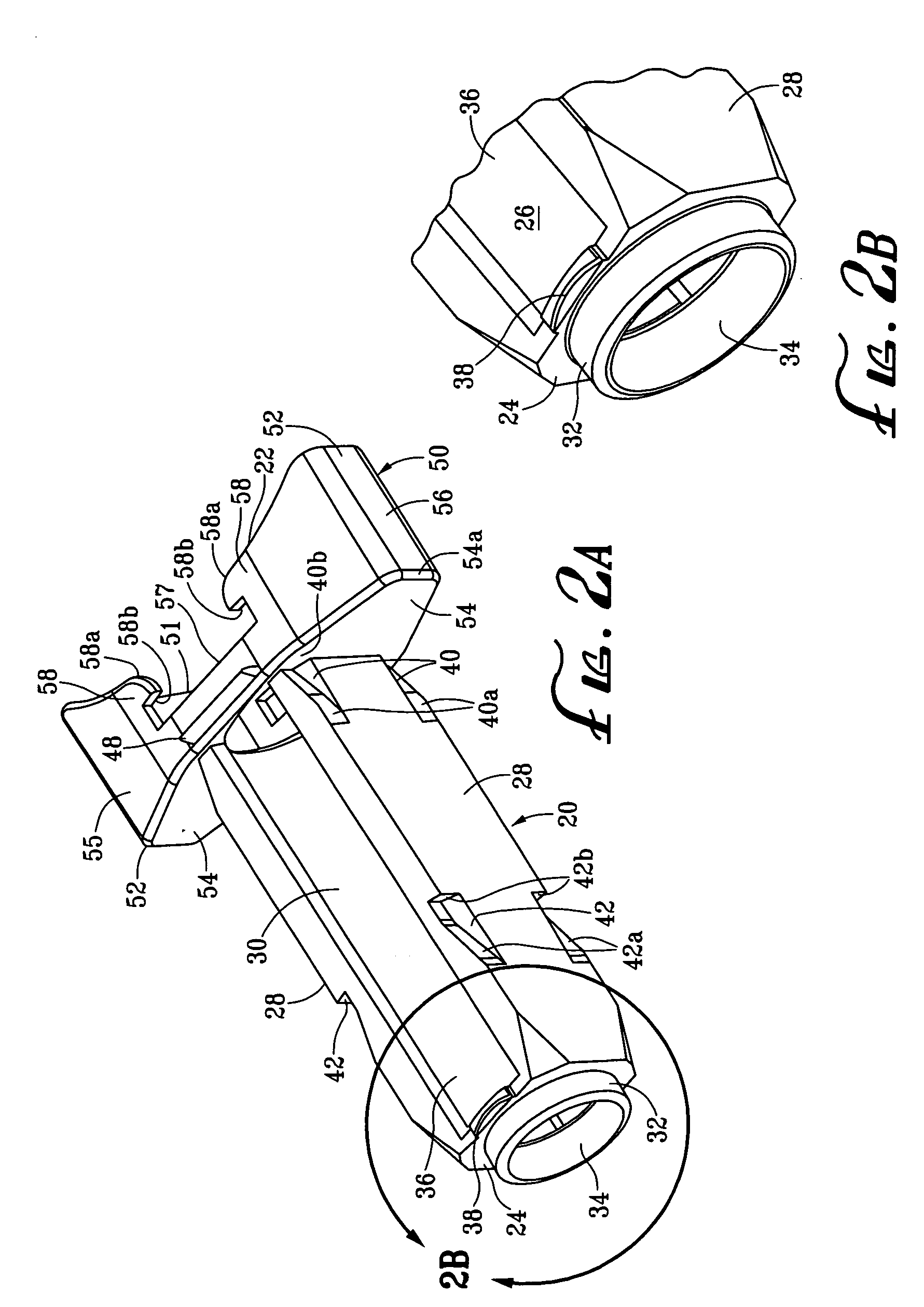Passive needle guard for syringes
a passive, needle guard technology, applied in the field of safety systems for syringes, can solve the problems of not being able to hold commercially available pre-filled syringes or ampoules, not being able to use conventional syringes or cartridges, and unable to prevent accidental needle exposure and/or reuse, so as to prevent subsequent proximal movement of shields, prevent accidental reuse of cartridges, and minimize the risk of accidental needle sticks
- Summary
- Abstract
- Description
- Claims
- Application Information
AI Technical Summary
Benefits of technology
Problems solved by technology
Method used
Image
Examples
Embodiment Construction
[0050] Turning now to the drawings, FIGS. 1-6 show a first preferred embodiment of a passive needle guard 10 for holding a syringe 90, in accordance with the present invention. Generally, the passive needle guard 10 includes three parts, namely a body 20 for receiving and holding the syringe 90, a shield 60 slidably attached to the body 20, and a spring mechanism 80. Both the body 20 and the shield 60 are generally molded from plastic, such as polypropylene, k-resin, or polycarbonate, and are preferably substantially clear and colorless to facilitate observation of the syringe 90 received therein. Alternatively they may be translucent or opaque, and may be colored, such as a latex color or a flesh tone.
[0051] Turning to FIGS. 2A-2C, the body 20 has opposing side rails 28 defining two elongate openings or windows 36 extending at least partially between a proximal end 22 and a distal end 24 of the body 20. The two side rails 28 generally have a “C” shape defining a cavity 26 extendin...
PUM
 Login to View More
Login to View More Abstract
Description
Claims
Application Information
 Login to View More
Login to View More - R&D
- Intellectual Property
- Life Sciences
- Materials
- Tech Scout
- Unparalleled Data Quality
- Higher Quality Content
- 60% Fewer Hallucinations
Browse by: Latest US Patents, China's latest patents, Technical Efficacy Thesaurus, Application Domain, Technology Topic, Popular Technical Reports.
© 2025 PatSnap. All rights reserved.Legal|Privacy policy|Modern Slavery Act Transparency Statement|Sitemap|About US| Contact US: help@patsnap.com



